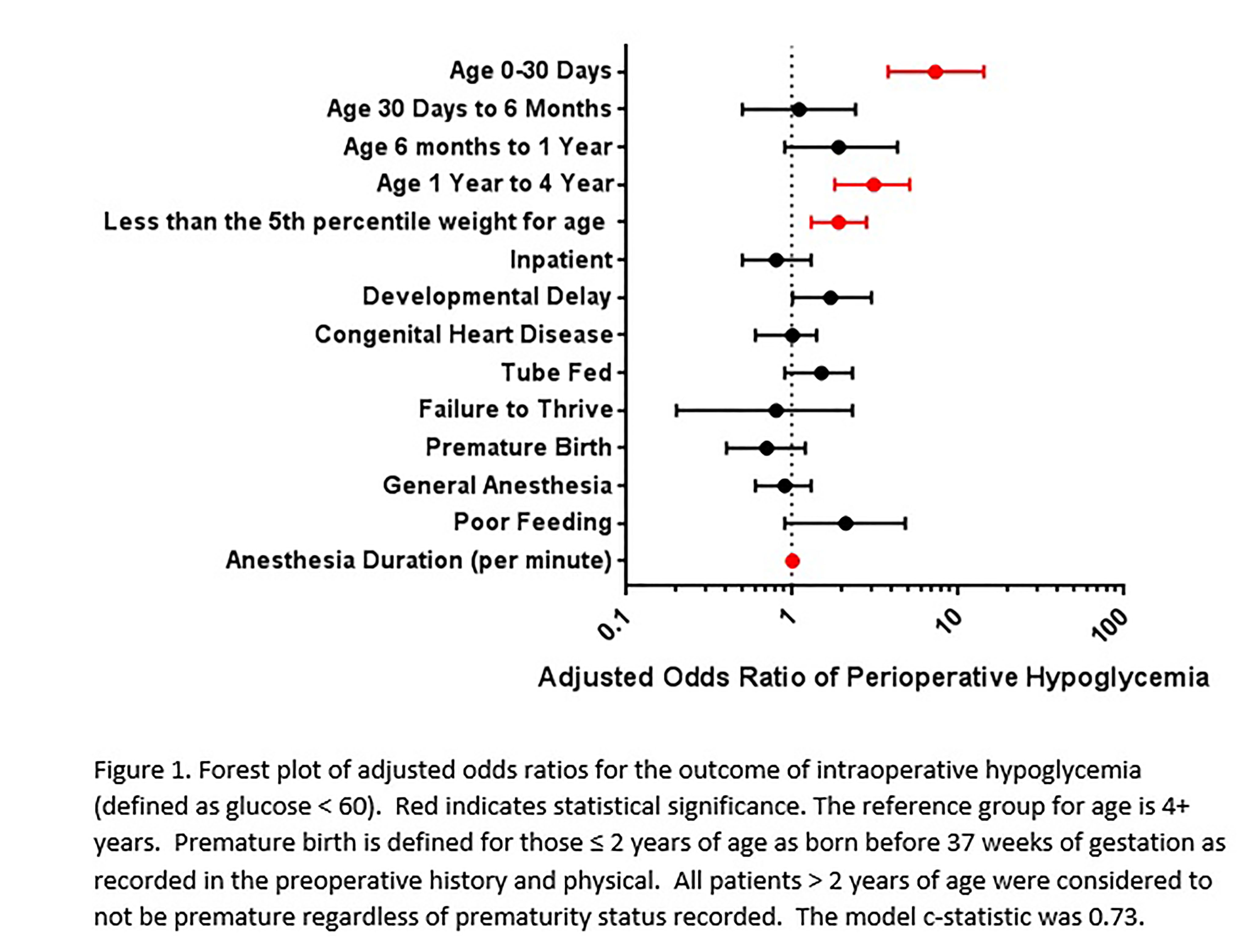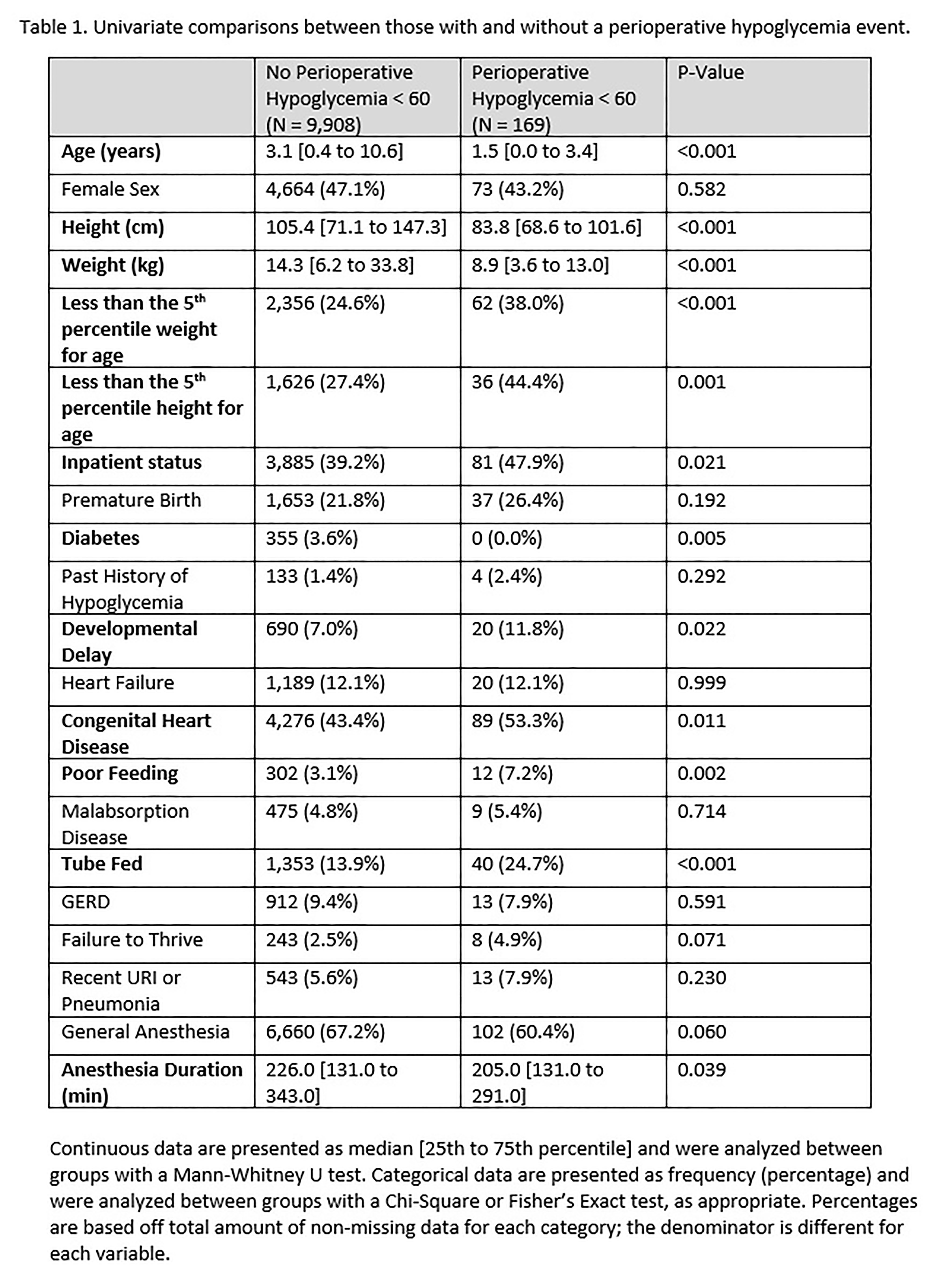NM-213
Risk Factors for Perioperative Hypoglycemia in Children
Riegger L, Thompson A, Malviya S, Tremper K
University of Michigan, Ann Arbor, MI, USA
INTRODUCTION
Perioperative hypoglycemia in children, though infrequent, can result in devastating neurologic injury if not promptly diagnosed and treated (1). Hypoglycemia in children has been extensively studied including the definition (2), the effect of fasting (3), and the effect of varying concentrations of dextrose administered during surgeries (4). Few studies have defined risk factors for perioperative hypoglycemia. We hypothesized that there are subgroups of pediatric patients at risk for perioperative hypoglycemia.
METHODS
This retrospective observational study at our institution included all patients < 18 years from January 1, 2012 to December 31, 2016 who had at least one blood glucose measured perioperatively. The primary outcome was hypoglycemia defined as a blood glucose less than 60 mg/dl. Information collected from the electronic medical record included patient demographics, chronic illnesses, evidence of failure to thrive, and type and duration of anesthesia.
Univariate comparisons for those with and without hypoglycemia were computed using Chi-squared or Fisher’s Exact tests for categorical variables, and independent t-tests or Mann-Whitney tests for continuous variables. A Pareto analysis was used to describe the distribution of hypoglycemia by age and weight. A multivariable logistic regression model was constructed to determine independent predictors for having a hypoglycemic event.
RESULTS
At least one blood glucose was measured in 10,077 patients, of which 169 had a glucose < 60 mg/dl (1.7%). Univariate analysis demonstrated significant factors associated with hypoglycemia (Table 1). Pareto analysis showed that 80% of hypoglycemia events occurred in children under 4 years of age and in those with weight less than 15 kg. A multivariable logistic regression model demonstrated that young age—particularly those less than 30 days (p < 0.001, AOR 7.3, 95% CI 3.8, 14.3), weight < 5th percentile for age and shorter anesthesia times were independent predictors for perioperative hypoglycemia in children (Figure 1).
DISCUSSION
Our findings support the hypothesis that there are children at risk for perioperative hypoglycemia: young patients, those less than the 5th percentile weight for age and those with shorter anesthetic times. These data may help identify which patients should have glucose measured and/or dextrose administered perioperatively, which may help prevent perioperative hypoglycemia and its negative sequelae in children.
REFERENCES
1) Cryer P. J Clin Investig 2007;117:868. 2) Leelanukrom R. Paed Anes 2000;10:353. 3) Welborn L. Paed. Anes. 1993;3:167. 4) Sümpelmann R. Ped Anes 2011;21:1114.
Top













